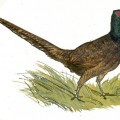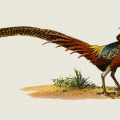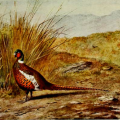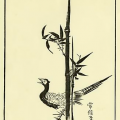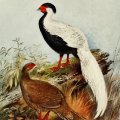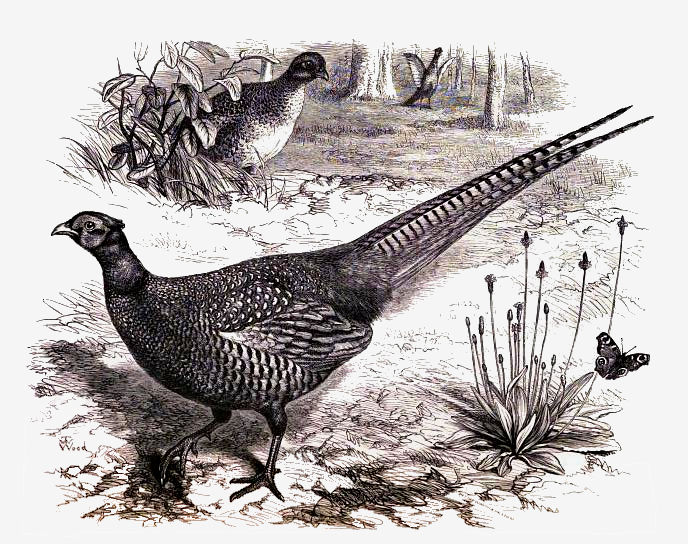 I think I’ve lost count of how many different editions of Pheasants for Coverts and Aviaries that I have seen today. It was written by William Bernhard Tegetmeier. The illustrations were done by a number of different artists. Some of the pheasant drawings are engravings like this one and there’s also a few full-colored ones that I will be adding to the vintage pheasant drawings category I started today.
I think I’ve lost count of how many different editions of Pheasants for Coverts and Aviaries that I have seen today. It was written by William Bernhard Tegetmeier. The illustrations were done by a number of different artists. Some of the pheasant drawings are engravings like this one and there’s also a few full-colored ones that I will be adding to the vintage pheasant drawings category I started today.
This edition included the work of Thomas (T.W.) Wood (1839-c.1910). Wood was an English zoological artist. He was an expert in his own right when it came to pheasants and is most well-known for his drawings and paintings of birds. He also created a number of memorable works depicting moths and mammals.
This drawing was described as a common pheasant drawing. But, calling these beautiful birds or this pheasant drawing “common” seems a mistake. It shows both the male and female birds in a natural setting. The book described these birds as often becoming quite familiar and comfortable around people. There were stories of the birds following their owner around like puppy dogs but when rattled, they could quickly revert to their wild nature. Much to the consternation of those same folks, these birds would leave the barnyard to breed in the wild and no enticement would cause them to stay to raise their young among people. So, in the end the defied most attempts at domestication.
What I really like about this common pheasant drawing is the bird on the far right. It’s crowing like a rooster. I never thought about it, but I never knew that pheasants crowed like that.
Hopefully, you’ll find this bird image useful for one of your projects.
This image is copyright free and in the public domain anywhere that extends copyrights 70 years after death or at least 120 years after publication when the original illustrator is unknown.
